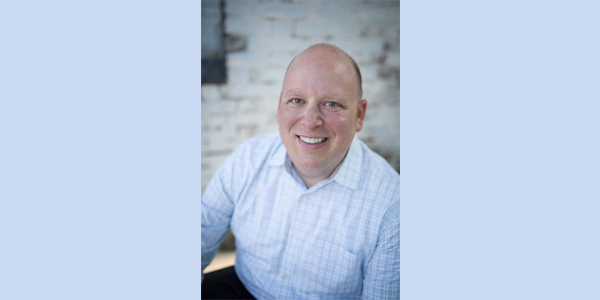“And they shall beat their swords into plough shares, and their spears into pruning hooks.” (Isaiah 2:4)
In a very 21st century iteration of Isaiah’s prophesy, Mark Seifert, MD is the first cardiologist in Arizona to take an electromagnetic technology, invented to improve the aim of Israeli fighter pilots, and use it instead to save the lives of heart patients – and protect them from medical radiation risks.
“I have a lifelong aversion to ionizing radiation,” says Mark, a heart rhythm specialist. “My father was an engineer who understood, even in the early ’60s, the risks of ionizing radiation. Growing up, we were only permitted to get dental X-rays every other year. The idea of using X-rays in the workplace would probably make my father roll over in his grave.”
So when Mark was introduced to an Israeli innovation that could significantly reduce the amount of radiation that patients are exposed to during the placement of cardiac resynchronization therapy (CRT) devices, he jumped at the opportunity to be a pioneer.
CRT implants involve placing a wire in the right lower chamber of the heart, so that it presses against the right side of the left lower chamber, and then carefully threading another wire through a vein that goes around the heart to the left side of the left lower chamber. The CRT device enables both sides of the left lower chamber to squeeze at the same time, improving the function of a weak heart. Because of the delicate nature of this procedure, a continuous X-ray process called fluoroscopy is used to help guide placement of the second wire. This exposes patients to an average of 22.2 minutes of radiation, which Mark says is the equivalent of 1,100 chest X-rays.
Using the new Israeli MediGuide technology. Mark’s team at HonorHealth John C. Lincoln Medical Center has reduced exposure time to an average of 90 seconds of radiation.
“The equipment that we use allows us to record a few seconds of X-ray movie in a typical way, which is then synchronized to the patient’s breathing and heartbeat rates. If the heart rate speeds up, the playback of the movie speeds up…. If the patient moves, the image moves, because there’s a sensor on the patient that tells the system what the patient’s doing in terms of heart rate, respiration and movement. Instead of using live X-ray through the whole procedure, we can just do a few seconds and work for many minutes or even hours.”
MediGuide uses magnetic tracking to locate a miniature sensor embedded in the lead used to position the wire. “Because the images that are recorded are our typical X-ray views, what we’re looking at is exactly like what we’d be looking at if we were using live X-rays. Instead of seeing our leads come down through the blood vessels into the heart, we’re looking at a little cartoon illustration of the sensor at the tip of our tool. But it’s moving exactly as it would,” explains Mark, who belongs to Congregation Or Tzion in Scottsdale.
In addition to reducing the amount of X-ray exposure by 95%, MediGuide increases the rate of successful CRT implants because Mark’s not racing against the “radiation clock.” Normally, 5-10% of CRT implant procedures need to be stopped before they are completed because radiation exposure exceeds the 60-minute limit, requiring chest surgery to place the leads. With radiation time slashed, this ceiling is gone and the success rate has increased to 98.9%.
Origins in the cockpit
This life-saving technology was developed by Israeli engineers who adapted it from a weapons targeting system for fighter pilots. Mark says they were working for Elbit, a defense contractor, to address the limitations of fixed-wing aircraft targeting systems, which only had a 30-degree targeting angle off the nose of the aircraft. Elbit placed a very low-intensity magnetic field in the cockpit and put a sensor on the pilot’s helmet. Small radio transmission receivers in the cockpit, similar to mini-GPS satellites, sense the position and orientation of the pilot’s helmet. “So when the pilot is looking at something far off the left wing, now when he hits the fire button, the system knows where the target is,” Mark explains. “They expanded that targeting window from 30 degrees to over 180 degrees. And I’m told that every United States fixed wing aircraft that carries weapons systems incorporates this today.
“A few years back, some of the engineers approached the company and said that they’d really be interested in exploring medical applications of this technology, and would it be permissible if they did that and broke away from the company. They got the blessing from Elbit and that’s how MediGuide started.”
St. Jude Medical bought MediGuide in 2012, although Mark says that most of the R&D still happens in Haifa, which he describes as a hotbed of medical technology innovation. As one of the early adopters of MediGuide, Mark works with engineers both in the U.S. and Israel to help them develop additional tools and applications of the technology.
When Mark’s team began working with MediGuide in 2014, HonorHealth John C. Lincoln Medical Center was the only hospital in the region of Arizona, New Mexico and Nevada to use this technology. And they are still considered at the forefront, presenting at conferences and serving as a show site for academic centers nationwide to observe the procedure.
“We’re really pioneering how to leverage this system and use it to maximize success rates and minimize radiation exposure at the same time,” says Mark. “And those two things, in my view, go hand in hand.”






